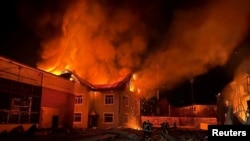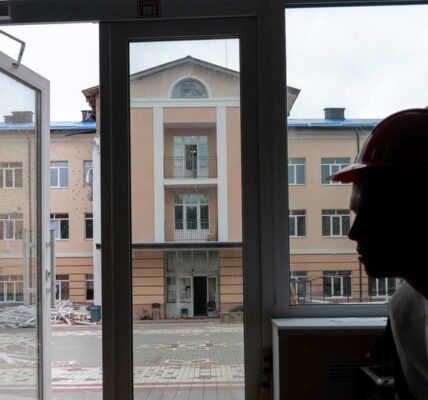On Tuesday, Ukraine reported that Russia’s armed forces carried out an attack during the night using 35 drones and two guided missiles, targeting various parts of the country.
The Ukrainian air force reported that their air defenses successfully took down 15 drones, which were intercepted over the regions of Mykolaiv, Sumy, Cherkasy, Dnipropetrovsk, Kharkiv, Kherson, and Kyiv.
The Russian air force targeted the fuel and energy sector infrastructure in their attack, according to reports.
On Monday, Russia announced that its air defense systems successfully stopped 21 Ukrainian drone attacks.
According to Russian news agencies, the military has either intercepted or destroyed Ukrainian drones in the Crimean Peninsula, which has been annexed by Russia, as well as in the Russian areas of Belgorod, Bryansk, Kaluga, and Tula.
On Monday, U.S. Secretary of State Antony Blinken cautioned that Ukraine’s efforts to defend itself against Russia are in danger if Congress does not approve a new round of aid.
At a press conference in Washington with NATO Secretary-General Jens Stoltenberg, Blinken stated that without it, all the progress made by Ukrainians that we have assisted them in achieving would be at risk.
The leader of NATO displayed assurance that the United States will uphold its support for Ukraine, citing the importance of preventing Russia from prevailing in Ukraine.
Stoltenberg also stated that supporting Ukraine is a collective effort among NATO allies and is not seen as a form of charity, but rather as an investment in our own security.
Russian-Belarus alliance
The leader of Russia, Vladimir Putin, had a meeting on Monday with Alexander Lukashenko, the leader of Belarus, in order to talk about strengthening their partnership. This partnership has already resulted in the placement of some of Russia’s atomic weapons on the land of Belarus.
Putin highlighted the “strategic partnership” between the two countries, as outlined in their 25-year agreement which includes political, economic, and military connections.
Putin stated at the beginning of the discussions in St. Petersburg, which included top officials from both nations, that it is crucial for Russia and Belarus to maintain close collaboration on the global stage despite facing unprecedented external pressure. He also emphasized that they have remained steadfast allies, providing unwavering support to each other.
For almost thirty years, Lukashenko has used Russian financial aid and political backing to maintain control over his country, which was once part of the Soviet Union. Despite widespread protests and accusations of election fraud in the 2020 vote, Lukashenko was able to stay in power thanks to support from Moscow.
In February 2022, Lukashenko gave permission for Russia to deploy troops to Ukraine through Belarusian territory.
Hungary-Ukraine talks
On Monday, Hungary stated that it is willing to reach a compromise that would allow the proposed $54 billion EU aid package for Ukraine to be funded from the bloc’s budget. This comes ahead of an emergency summit on Thursday.
Viktor Orban, the Prime Minister, has strongly opposed the EU’s financial and military assistance to Kyiv and has maintained a strong relationship with the Kremlin since the Russian invasion of Ukraine in February 2022.
If Hungary does not approve of the package, EU leaders have suggested an alternative solution that would involve a deal between 26 members and Ukraine. This alternative plan would also prevent Budapest from receiving linked EU funds.
The Foreign Affairs Minister of Hungary, Peter Szijjarto, held a meeting with his Ukrainian counterpart, Dmytro Kuleba, in Kyiv. They discussed providing aid and addressing limitations on the rights of the ethnic Hungarian community in the western Ukrainian region of Zakarpattia to receive education in their native language.
The Hungarian official stated that Hungary hopes for the members of the Hungarian community to regain their previously held rights from 2015. They acknowledged that there is still a lot of work to be done, but Hungary is prepared to make progress in this regard.
Kuleba stated that he believes the issue with the Hungarian minority has been resolved, but a committee will be formed to investigate how Kyiv can meet Budapest’s additional requests regarding the Hungarian community in Ukraine. The committee will report its findings to both governments within 10 days.
This marked Szijjarto’s initial trip to Ukraine since Russia’s incursion, and the sole formal dialogue between the two leaders in the past 24 months.
Information for this report was obtained from The Associated Press, Agence France-Presse, and Reuters.
Source: voanews.com




